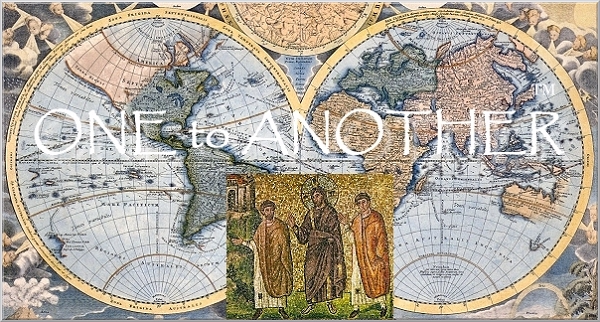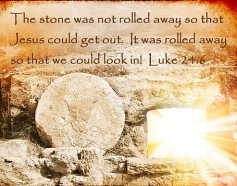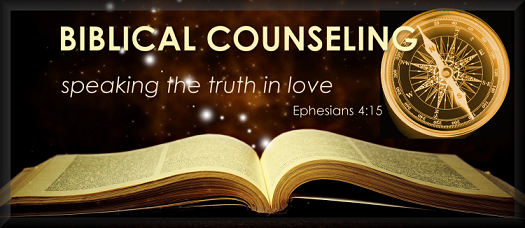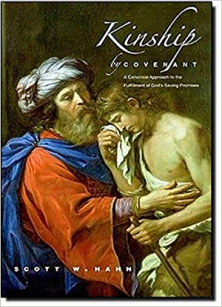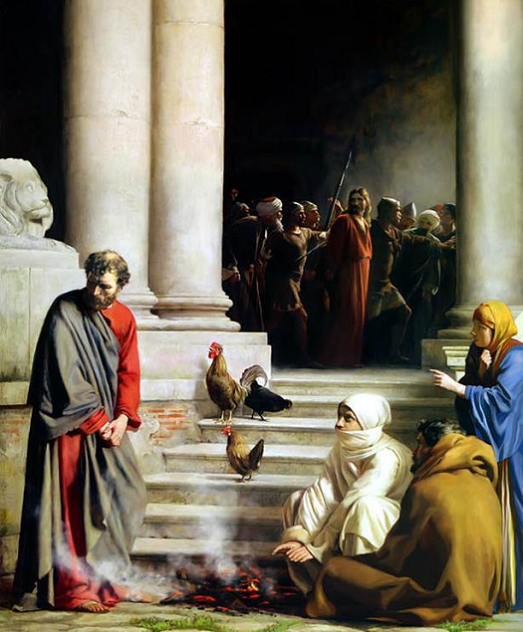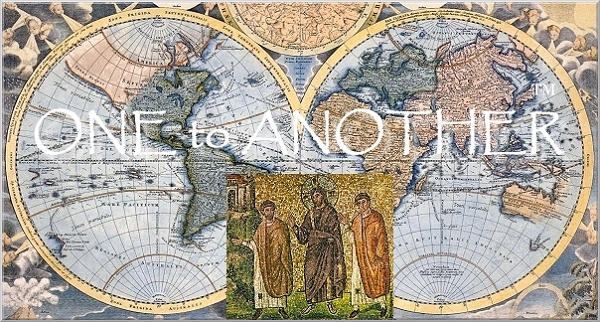MASTER'S International UNIVERSITY of Divinity
Bi-Monthly Information and Teaching Journal
ONE to ANOTHER ~ April - May 2017 ~ Volume III ~ Issue 3
In This Issue
Day Three of the Third Day | What is Man? | From Glory to Glory | Book Review | Christlike in A Broken World
DNA Nightmare | The Lamb and the Rooster | New Life from a Stick | What the World Needs | The Bible As A Divine Revelation
resurrection | noun | the state of one risen from the dead
Resurrection Sunday - April 16, 2017
"He is not here, but He has risen" ( Luke 24:6).
- His Purpose - the redemption of the human race - John 3:16
- His Passion - no one took His life for He gave it - John 10:18
- His Power - by the resurrection from the dead - Romans 1:3-4
- His Parousia - the promise of His return - Acts 1:11, Revelation 22:20
"the sign of Jonah the prophet; for just as 'JONAH WAS THREE DAYS AND THREE NIGHTS IN THE BELLY OF THE SEA MONSTER,' so will the Son of Man be three days and three nights in the heart of the earth" (Matthew 12:40).
The number of days the Lord Jesus Christ was in the tomb, and the day upon which He rose from the dead may at first appear to present a contradiction, but which upon closer examination presents itself as not only naturally accurate, but also an amazingly instructive fulfillment of prophecy.
When we take the teachings of Scripture at face value, and without unwarranted complication, we always find the truth both clear and refreshing. It is in that spirit of hermeneutics that the following thoughts are offered for the reader's benefit.
Jonah on Day Three of the Third Day
"However, the men rowed desperately to return to land but they could not, for the sea was becoming even stormier against them. So they picked up Jonah, threw him into the sea, and the sea stopped its raging" (Jonah 1:13, 15).
Notice that " the men rowed desperately to return to land but they could not." These men had sailed from the port of Joppa (located next to modern Tel Aviv, Israel). Their beginning route would take them northward in the Mediterranean Sea along Israel's coastline.
As a seaman myself, I can attest that the sailors could only have known the direction of the land by the light of day. Unlike today, they had no navigation device that could point them to land in the midst of a raging storm except sufficient daylight by which they could see the shoreline.
Immediately upon throwing Jonah overboard "the sea stopped its raging." They would then be able to make landfall before darkness obscured the way to shore. It is not unreasonable to suggest that as they rowed for shore they were also witnesses to the swallowing of Jonah by the sea monster.
"And the LORD appointed a great fish [sea monster]to swallow Jonah, and Jonah was in the stomach of the fish three days and three nights" (Jonah 1:17).
"Then the LORD commanded the fish [sea monster], and it vomited Jonah up onto the dry land" (Jonah 2:10).
While the narrative of Jonah does not specifically say so, it is reasonable to believe that he was vomited up early in the morning not on the fourth day, but on the third.
"Now the word of the LORD came to Jonah the second time, saying, 'Arise, go to Nineveh the great city and proclaim to it the proclamation which I am going to tell you.' So Jonah arose and went to Nineveh according to the word of the LORD" (Jonah 3:1-3).
If Jonah were vomited up on the third day, it is logical to conclude that it would have been very early in the morning so that he would benefit from the most daylight by which to begin his travel to Nineveh (just outside of the modern city of Mosul, Iraq), which might have been a journey as far as 700+ miles.
Conclusion - Jonah may have been swallowed mid-afternoon on day one of the three days, and vomited on dry ground very early in the morning on the third day of day three.
Esther on Day Three of the Third Day
"Then Esther told them to reply to Mordecai, 'Go, assemble all the Jews who are found in Susa, and fast for me; do not eat or drink for three days, night or day. I and my maidens also will fast in the same way. And thus I will go in to the king, which is not according to the law; and if I perish, I perish.' So Mordecai went away and did just as Esther had commanded him" (Esther 4:15-17).
Notice the term "three days, night or day," and how similar it is to "three days and three nights" (Jonah 1:17). Next, consider the following.
" Now it came about on the third day that Esther put on her royal robes and stood in the inner court of the king's palace in front of the king's rooms, and the king was sitting on his royal throne in the throne room, opposite the entrance to the palace" (Esther 5:1). Notice that she appeared before the king not on day four, but on the third day (day three).
Conclusion - If Esther came before the king on day three of the three day fast, either the fast was broken after only two days, or the term "three days, night or day," and "three days and three nights" may mean something other (and even more precise) than what we normally assume. Which in fact is the case. The venerable Dr. Adam Clarke expresses the natural and cultural interpretation of this phraseology.
"Evening and morning, or night and day, is the Hebrew phrase for a natural day, which the Greeks termed νυξθημερον, nuchthemeron. The very same quantity of time which is here termed three days and three nights, and which, in reality, was only one whole day, a part of two others, and two whole nights, is termed three days and three nights." 1
In other words, a "day" in this context may be reckoned as a unique calendar day if it has a day (daylight) and a night (nighttime). The common use of the term (of so many days and nights), was not misunderstood in its historical context. In fact, even today such terminology is commonly used and understood. For example, someone may say, "For three days, I will be staying with a family member who lives in another city, and on the third day I will return home." In such a case we naturally understand the meaning.
Therefore, if Esther appeared before the king on the third day of a three day fast, she may have appeared before him on day three anytime between the dawn (early morning light) and the fall of night (night time). If she had appeared before the king after three successive 24 hour calendar days, she would in fact have appeared before the king on the fourth day.
Jesus on Day Three of the Third Day
Consider now Jesus' words to His disciples on His way to Jerusalem prior to his betrayal - "and will hand Him over to the Gentiles to mock and scourge and crucify Him, and on the third day He will be raised up" (Matthew 20:19).
This was a teaching Jesus gave over and over during His time with His disciples. But early on in His ministry, He also gave a cogent and succinct statement that formed a very precise time-line leading up to His resurrection on the third day.
Consider Jesus' words to some of the scribes and Pharisees (spoken in the presence of His disciples) - "Then some of the scribes and Pharisees said to Him, 'Teacher, we want to see a sign from You.' But He answered and said to them, 'An evil and adulterous generation craves for a sign; and yet no sign will be given to it but the sign of Jonah the prophet; for just as JONAH WAS THREE DAYS AND THREE NIGHTS IN THE BELLY OF THE SEA MONSTER, so will the Son of Man be three days and three nights in the heart of the earth'" (Matthew 12:38-40).
Not only does Jesus validate the account of Jonah as a literal event, He confirms Jonah's being vomited up on day three of the three days he was in the belly of the sea monster, and helps us to better understand how it was that Esther appeared before the king on the third day of a three day fast.
If then we take the expression "three days and three nights" in its logical cultural context, we can expect that Jesus would be in the "heart of the earth" during three distinct calendar days, and before the end of the third day, rise from the dead. Had He been in the tomb three 24 hour days, he would have had to have been crucified on the day before day one, and risen the day after day three in which case He would have risen on day four, and not day three!
Yet, He clearly said "as JONAH WAS THREE DAYS AND THREE NIGHTS IN THE BELLY OF THE SEA MONSTER, so will the Son of Man be three days and three nights in the heart of the earth." - "and on the third day He will be raised up."
So clearly was Jesus' prophecy understood by His enemies, that they knew if He rose on the fourth day it would constitute a fraud. This is why the Chief priests and the Pharisees came to Pilate and said: "Sir, we remember that when He was still alive that deceiver said, `After three days I am to rise again.' Therefore, give orders for the grave to be made secure until the third day, otherwise His disciples may come and steal Him away and say to the people, `He has risen from the dead,' and the last deception will be worse than the first.'" (Matthew 27:63-64).
Rise He did - on the third day! "But on the first day of the week, at early dawn, they came to the tomb bringing the spices which they had prepared. And they found the stone rolled away from the tomb, but when they entered, they did not find the body of the Lord Jesus. While they were perplexed about this, behold, two men suddenly stood near them in dazzling clothing; and as the women were terrified and bowed their faces to the ground, the men said to them, 'Why do you seek the living One among the dead? He is not here, but He has risen. Remember how He spoke to you while He was still in Galilee, saying that the Son of Man must be delivered into the hands of sinful men, and be crucified, and the third day rise again.'" (Luke 24:1-12).
Finally, after His resurrection, Jesus appeared to His disciple, and spoke to them these amazing words: "Now He said to them, 'These are My words which I spoke to you while I was still with you, that all things which are written about Me in the Law of Moses and the Prophets and the Psalms must be fulfilled.' Then He opened their minds to understand the Scriptures, and He said to them, 'Thus it is written, that the Christ would suffer and rise again from the dead the third day'" (Luke 24:44-45).
THE THREE DAYS
- Day One - Jesus is crucified, laid in the tomb, and thus entered the "heart of the earth."
- Day Two - Jesus remains in the "heart of the earth."
- Day Three - Jesus remains in the "heart of the earth" until" "early dawn," then rises!
As noted at the beginning of this article - The number of days the Lord Jesus Christ was in the tomb, and the day upon which He rose from the dead may at first appear to present a contradiction, but which upon closer examination presents itself as not only naturally accurate, but also an amazingly instructive fulfillment of prophecy.
The importance of that prophecy became the core truth of the greatest teaching on the resurrection of the dead to be found anywhere in the Bible - I Corinthians chapter 15. There the Apostle Paul declared: "that He was buried, and that He was raised on the third day according to the Scriptures" (I Corinthians 15:4).
Conclusion - What then does this mean for those of us who trust in the truth of the resurrection of our Lord Jesus Christ? Ultimately it means:
"For the Lord himself shall descend from heaven with a shout, with the voice of the archangel, and with the trump of God: and the dead in Christ shall rise first: Then we which are alive and remain shall be caught up together with them in the clouds, to meet the Lord in the air: and so shall we ever be with the Lord. Wherefore comfort one another with these words" (I Thessalonians 4:16-18).
MARANATHA!
I Corinthians 16:22
1. Adam Clarke http://odl.mdivs.edu/com/acc/view.cgi?book=mt&chapter=012
Scripture quoted in the article is taken from the NASV.
"When I consider Your heavens, the work of Your fingers, the moon and the stars, which You have ordained; What is man?"
Psalm 8:3 & 4
David, at night when he watched his father’s flock, had many occasions to “consider the heavens,” and must have often asked himself “what is man?” In comparison to an endless space, radiant moon, and host of sparkling stars man seemed to the Psalmist insignificant. Looking heavenward David’s pride was subdued by an overwhelming humility.
One of the distinguishing characteristics of puny and fragile man, and the cause of innumerable conflicts is pride. Yet there is no attitude more out of place to the character and circumstances of man, made of dust, whose follies are so numerous and glaring, than pride. Nevertheless, he struts in all his haughtiness and glories in his shame. This deplorable propensity in human beings is, at least for a moment, countered by a survey of the immensity of God’s creation where man is as a grain of sand. “What is man?” What is sinful man, a creature so forgetful of his Creator, “that You take thought of him?"
Man is honored, according to the abundant kindness of God, and given a place near angels. “For thou hast made him a little lower than the angels” (Psalm 8:5, KJV). Lower than angels because his body, like the animals, is made from dust, but he is akin to the angels for man is spiritual and immortal. He is endowed with noble faculties and abilities for God “crowned him with glory and honor” (Psalm 8:5). He was created and distinguished by God to rule and given dominion over the inferior creatures. “You make him to rule over the works of Your hands; You have put all things under his feet” (Psalm 8:6).
What David started with as a proposition in the first verse, he closes with as a well proven conclusion, “O Lord, our Lord, how majestic is Your name in all the earth.” What tongue can utter half the greatness of our God? All of creation is filled with His glory. His power and wisdom are visible everywhere. Descend into the depth of the ocean where no light penetrates, where the sand is motionless; even there are the wonders of God. From the myriad of stars in the vast expense of space to the creeping insects, to the crowning act of man the miracles of God’s power surround us.
Read II Corinthians 3:12-18
There are times in life when we may wish that we were more than we are. I heard about a fellow who sent his picture to the lonely hearts club hoping perhaps to find some companionship. In a few days he got a letter back saying, “We are not that lonely!” I heard about another fellow who looked up his family tree and found out that he was a sap. I heard of a man who had an inferior complex. His complex was so bad that when he got on an elevator he told the attendant, “Sixth floor, please; if it is not out of your way.”
Well one piece of good news is that we as Christians are going to be made much more than we are. Paul wrote in our Scripture text for this article that we would be changed from glory to glory. There are three powerful realities in this text.
First Paul would have us understand:
I. We Behold the Glory
In the Old Testament, Moses saw the glory of God when he walked up Sinai to receive the Law of God for the people of God. It was there he found himself in God’s presence. The glory was so intense that when he descended the mountain he had to wear a veil over his face; his face shown with God’s glory and the people were not able to look upon it (Exodus 33:29-35).
That was the glory of the Old Covenant. It was written and engraved in stone and spoke of death (II Cor. 3:7). It was the letter of the law that killeth (vs. 6). It was filled with commandments: “Thou shalt not!” It was filled with judgment: “And if you do death!”
It was given for a time to show the seriousness of sin and the holiness of God; but it was never established to be an eternal glory. Paul wrote that the law’s glory was to be done away (II Cor. 3:7). Paul declared that the ministry of the Holy Spirit and the ministry of righteousness would exceed the glory of the Old Covenant (vss. 8-9).
It is that exceeding glory that we behold today. We see the glory of forgiveness. We see the glory of eternal life. We see the glory and love of God in the face of Jesus Christ. All of Scripture reflects the glory of Jesus. We read Matthew’s gospel and we see the glory of God’s King. We read Mark’s gospel and we see the glory of God’s Servant. We read Luke’s gospel and we see the glory of the Son of Man. We read John’s gospel and we see the glory of the Savior. We read the Book of Acts and the see the glory of the One who turned the world upside down. We read the Epistles and we see the One who is glorified in His church. We read the Book of Revelation and we see the glory of the King of kings and the Lord of lords. This is the exceeding glory we behold today, the glory of the Lord!
The second mighty truth is:
II. We Reflect the Glory
Paul writes that we behold this glory as in a mirror (II Cor. 3:18). If Moses had looked into a mirror as he came from the mountain he would have seen reflected glory. The point is just this – we should be so controlled by the Holy Spirit that everything we do redounds to the glory of God so that others see the glory of God in us. We exist as heaven’s advertising agency, promoting the glory of God in every area of our lives.
To paraphrase from a sermon by Max Lacado: How well do you know the following people and organizations? Jack Tinker and partners? Doyle Bernbach? BBDO? Foote, Cone, and Belding? How well did you do? Chances are you don’t know any of them; and, if not, they are pleased. Advertising companies don’t exist to make names for themselves. Their purpose is to make a name for others.
While you are probably not familiar with these individuals or companies, you are probably very familiar with their work. “Plop, plop, fizz, fizz, oh want a relief it is!” is the work of Jack Tinker and Partners for Alka-Seltzer. “We try harder” is the slogan created for Avis Rent-a-Car by Doyle Bernback. “M’m! M’m! Good!” is the catchphrase designed for Campbell’s Soup by BBDO in 1935. “When you care enough to send the best” is the line developed by Foote, Cone, and Belding for Hallmark in 1934.
We could learn much from these companies. What they do for their clients we should do for Christ. Like mirrors, we should reflect the glory of the Lord. This becomes a reality as we depend upon the Holy Spirit and follow His initial promptings. Paul said that this glory was by the Spirit of the Lord (II Cor. 3:18).
One final reality is found in this passage:
III. We Become the Glory
What a powerful statement. Paul says that we are changed into the same image from glory to glory (II Cor. 3:18). We behold the image of Christ and the Holy Spirit makes us into that image. This happens step by step or as Paul states from glory to glory.
The word “changed” is the word “transformed” What a unique word. All of us know what a transformer is. The electric company puts one of these outside of our house to handle the electric power that comes into our home. In reality, if the electric power came directly into our home from the power company, our wiring could not handle it. The power would be so massive that our homes would explode.
The transformer takes the massive, raw power and puts it into usable form so that as it comes into our homes the lights come on and the electric items work.
The Holy Spirit does this for us with God’s massive power. He takes the raw power of God and flows it into us so that we are changed from glory to glory – or step by step – into the image of Christ.
The Holy Spirit uses three glories to accomplish this eternal purpose. First is the glory of justification. This happens at the moment of salvation. At the instant we place saving faith in Jesus Christ, God the Father declares that we are innocent of all wrong doing, cleansed by the blood of Christ, and made acceptable in His sight. This is an eternal transaction that will happen only once.
From that moment of justification the Holy Spirit begins the second work of glory, sanctification. The Holy Spirit works within us daily to set us apart for God’s glory and service. He does this work in us continually from the moment of salvation until the moment we step into God’s eternal presence. As we give the Holy Spirit control of our lives we become more and more like Jesus every day.
The final step of the process is glorification. At the moment of physical death we enter our glorified state. The Scripture says that we shall be like Him for we shall see Him as He is. And at the rapture of the church we will receive glorified bodies.
We are moving from glory to glory. The final step will be into His presence. For all who know Christ, this will be eternity – the final glory!
Kinship by Covenant
by Scott W. Hahn, ISBN-13: 978-0300140972, Yale University Press, 2009.
Cheryl A. Durham, M.Min., Ph.D., Dean of Students
Review of Kinship by Covenant: A Canonical Approach to the Fulfillment of God’s Saving Promises, by Scott W. Hahn, published by Yale University Press. 2009
Generally speaking, Hahn does an excellent job of defining the nuances in the term “covenant” as well as articulating how the idea of covenant attaches to the idea of kinship; especially in the use of the word “son.” He covers the elements in the Hebrew Bible, but goes on to voice a different view than the rather traditional interpretations of Paul in Galatians as well as with the author of the book of Hebrews. His canonical view shows a progression of covenants and kinship that ultimately helps the student see the progressive revelation of God and his plan for total redemption of the human race. Additionally, after reading this, I have a clearer idea of how both Jewish and Gentile believers fit together into the phrase Paul uses: “in Christ.”
The reading and sometimes rereading of this text is slow because there is much detail to absorb, however, the insights brought out in a careful reading show a much more hopeful view of Paul (within his Second Temple Judean context) as well as a view of Hebrews which I believe is the capstone of his covenantal/kinship theme. The Hebrew Biblical texts that go over God’s interaction with Adam, then Noah, then Abraham, Moses and David, show a positive progression of God working in His world.
I would recommend this book to all students and alumni as it will readjust some of your thinking away from traditional interpretations that often sidetrack the believer into a false narrative opinion as to what covenants are and how they relate to the kinship of all Christ followers. I encourage people to either buy it or get it through an inter-library loan like I did. It is well worth the effort.
Being Christlike in A Broken World -
Part 3 of 4
David W. Anderson, Ed.D., D.B.S.; Program Developer and Director for the Master of Arts Certificate in Disabilities Ministry
Dr. Anderson's book, Reaching Out & Bringing People In : Ministry to and with Persons with Disabilities, ISBN 978-1-4497-9095-0, Westbow Press, 2013 can be purchased through Master's Bookstore or Click here to purchase.
Being Christ in a Broken World - Part 3: Being a Servant
Introduction:
Being like Christ in a world that is broken requires a transformation in character which began when we became a new creation in Christ Jesus (2 Corinthians 5:17) and continues in ongoing spiritual renewal and growth as we are molded more to the image of Christ (2 Corinthians 3:18). Paul urged us not to conform to this world, but to be transformed into a new person as God changes the way we think (Romans 12:2). This transformation results in, and is furthered by, our participation in Jesus’ mission as outlined in Luke 4:18, and as we carry the message of good news to the whole world. Four aspects of Christlikeness in ministry are incarnation, vulnerability, servanthood, and justice. Being incarnate and being vulnerable were addresses in the first two articles in this series. In Part 3, the focus is on servanthood.
For many people, the idea of being someone’s servant is objectionable, especially in a culture which prizes independence. Being a servant is perceived to be a menial task — a humiliating position not befitting our thoughts of self-importance, perhaps a position taken only out of desperation. But is this view biblical? Jesus, in bringing to a close his teaching at his last supper with his disciples, said: “In this world you will have trouble. But take heart! I have overcome the world” (John 16:33). To “overcome” connotes conquering and victory. But just how did Jesus “conquer” the world? Many will answer this question by referring to Jesus’ death and resurrection whereby he broke the bonds of sin and death and opened heaven’s gate for all who believe. But I suggest that Jesus’ entire ministry gave evidence of his conquering or overcoming the world. In his first epistle, John used similar language to describe Christians as overcomers “because the one who is in you is greater than the one who is in the world” (1 John 4:4). But this “Great One” who has overcome the world came as a servant and conquered through servanthood, not through force and domination in the manner of earthly leaders. Jesus outlined his mission in Luke 4:18 as one of concern for people in need of good news, held captive by sin or circumstances, treated unfairly, and spiritually and emotionally distressed. The Gospel accounts clearly show Jesus carrying out his mission through teaching and actions which communicated his deep love and his desire to serve, not just through his atoning death and resurrection. Jesus came not to be served but to serve others (Philippians 2:3–8; Matthew 20:28). For us to be Christ in a broken world requires having this same attitude of service toward others. Our whole lifestyle as followers of Jesus should be modeled after Jesus’ lifestyle and characterized by humility and servanthood.
Being a Servant:
It is important to recognize the distinction between servitude and servanthood. Servitude implies bondage or slavery, a state of involuntary subjection to someone more powerful and who generally acts tyrannically. Servanthood, on the other hand, is something done willingly and has the good of others as its focus, rather than self. Kenneth Haugk explained that “servitude acts out of a sense of duty and fear, but the person living in servanthood acts out of a sense of commitment and love” (1984, p. 71). The former is unhealthy and degrading; the latter is life-affirming and spiritually enriching, to ourselves and to others.
In saying that “whoever wants to become great among you must be your servant” (Matthew 20:26), Jesus used the word διάκονος, which we tend to be more comfortable with when interpreted as “deacon” or “minister.” But διάκονος more properly means servant or attendant, like the person at a restaurant who takes our order and serves the meal. Christians are to be willing servants of God and others. To be like Jesus in a broken world means taking our cue from Jesus and mirroring his selfless love, as exemplified in his washing the feet of the disciples (John 13:1–15). Just as Jesus poured out his life for us, we must be willing to pour out our lives for those to whom we minister.
Servanthood and Kingdom Values:
Kingdom values are significantly different from the world’s values. Jesus explained in Matthew 18:1–4 that greatness is not found in the praise of others or in being served by them, but in seeking to serve others — especially people whose rights are neglected or who are pushed aside by the culture or neglected by the church, as is often the case with people who deal with disabling conditions. Our ultimate motivation for ministry is for God to be glorified through our actions and in the lives of those touched by the truth of the gospel. Proclaiming the gospel is not limited to verbal presentation. We are to make the message of the gospel visible by sharing the good news in the same manner as Jesus: through words and deeds; through compassionate service and action; through advocating social justice; and through accepting, welcoming, and loving all people. Our transformed relationship with God through Christ must lead to a transformed relationship with the world. The message we bring should not just be heard, but seen in compassionate ministry of serving people in need — the “least of these,” as Jesus described in Matthew 25:40.
Jesus is the embodiment of God’s love (John 3:16). Jesus said to his disciples, “As the Father has sent me, I am sending you”(John 20:21). The word “as” in this verse applies not simply to the idea of our being sent on a mission as was Jesus. All ministry requires embodiment and action. Therefore, just as Jesus embodied the love of the Father, we must give body to the love of God, verbally and through actions of compassionate service. We are to be a re-presentation of Jesus, modeling both his character and his actions. For our ministry to be incarnational requires entering the world of those we serve, making ourselves vulnerable, and serving them just as Jesus walked alongside and served his disciples and others during his earthly ministry. This includes being ready to minister to and with people and families affected by disabilities. It means modeling the principle behind Paul’s statement, “Though I am free and belong to no man, I make myself a slave to everyone, to win as many as possible” (1 Corinthians 9:19). Here, Paul uses the stronger word, slave (δουλόω), to communicate the intensity of his desire, which led him to voluntarily lay aside his “self” — his “rights” — choosing instead to serve the spiritual needs of others, modeling the Lord Jesus who set aside the privileges of deity and took on the status of a slave, becoming human (Philippians 2:7).
As with Jesus’ earthly ministry, an essential part of our mission is responding to and seeking to alleviate the cause and result of evil in the world. Our call is both to proclaim the good news through our verbal testimony and to demonstrate Christ’s concern for the spiritual, physical, emotional, mental, and relational well-being of persons, families, and groups — both inside and outside the community of faith. The essence of Christian servanthood is captured in the great commandment: “Love the Lord your God with all your heart, all your soul, and all your mind . . . (and) love your neighbor as you love yourself” (Matthew 22:37-40). And as we learn from Jesus’ parable of the good Samaritan (Luke 10:14–37), our neighbor is anyone we encounter who has a need.
The kingdom mandate for ministry taught in Matthew 25:31-45 is to serve human needs without respect of persons. All Jesus’ disciples are to engage in such activities as providing food and nourishment to the hungry and thirsty, according hospitality to aliens, visiting the imprisoned, and caring for those who are physically diseased or disabled. This form of pastoral care is not limited to the staff of a church; it is care provided by the entire community of Christians as they live out the gospel in a way that demonstrates a new way of being human, fundamental to which is caring for others (Swinton, 1999). Through this caring, we provide a living example of God’s love, and a witness to God’s demonstration of that love on Calvary. Demonstrating love to our neighbor (whether a fellow believer or not), consists of desiring the person’s greater good and the intention to do what we can to meet his or her needs.
To be Christ in a broken world is to show concern for people who are in any way disenfranchised, as in the history of exclusion of persons with disabilities from education and community life. “The constant message of the Scriptures buttressed by the stunning example of Jesus is that God’s Kingdom people are to use their authority, power, and prestige to help and serve, never to hurt, those without authority, power, and prestige” (Kraft, 1996, p. 313).
Several years ago my home church held a “Church has left the building” program in which many members participated. The focus was on serving people in the surrounding neighborhood, not just members of the church. The volunteers included individuals and whole families, and were involved in activities such as cleaning up the yard of elderly persons, doing some touch-up painting in some homes, fixing gutters, performing simple auto repairs, helping at group homes for individuals with disabilities, or visiting with shut-ins. Children and youth put together lunch packs and delivered them to shelters, and older adults gathered at a residential facility to sing hymns and pray with residents who were unable to go to church. The volunteers from the church became “the hands and feet and voice” of Jesus to those with whom they ministered in these practical ways. While not purposed as an intentional evangelistic outreach, many opportunities arose to share the gospel message. The church was seen in a different light by those who benefited from the ministry, and many of the volunteers gained a new perspective on what it means to be a Christian.
Conclusion:
Being incarnational in our ministry necessitates being vulnerable and engaging in compassionate service to others, as Jesus’ representatives. God’s call to service cannot be separated from his intention to work in our lives (Perkins, 2003). As stated earlier, our transformation as Christians results in, and is furthered by, our participation in Jesus’ mission as outlined in Luke 4:18. Christ calls us to be his partners in extending his kingdom. He has designed, saved, equipped, and placed us where we are in order to “speak” the gospel as much through compassionate service as through words. Servanthood is to characterize our lifestyle, not just be a momentary or temporary commitment. Our presence (being incarnate) necessitates demonstrating “brokenness” (being vulnerable) as we serve others.
References Cited:
Haugk, K. C. (1984). Christian caregiving: A way of life. Minneapolis: Augsburg Publishing House.
Kraft, C. H. (1996). Anthropology for Christian witness. Maryknoll, NY: Orbis Books.
Perkins, J. (2003). Beyond charity: The call to Christian community development. Grand Rapids, MI: Baker Books.
Breakthrough Creates DNA Nightmare
Bradley Mattes, M.B.S. Adjunct Faculty; President and CEO of Life Issues Institute, Inc.
It sounds too bizarre to be true. Someone gets in close physical proximity to a successful billionaire, handsome movie star or brilliant Ivy League professor. Sluffed skin cells are clandestinely collected and coaxed into induced pluripotent stem cells in a laboratory culture dish. Then they’re transformed into functional sperm.
The sperm is combined with an egg, and a human embryo is conceived and implanted into a woman. The individual is then hit with a paternity suit for child support. A DNA test seals his fate.
Set aside your first inclination to dismiss this as the stuff of science fiction. It’s already real. At least in animals.
Researchers in Japan have successfully achieved in vitro gametogenesis (IVG) with mice and it’s expected that human triumphs will soon follow. Women could be at equal risk of IVG exploitation because the same technology can transform skin cells into eggs.
Emily Mullin, writing for MIT Technology Review, sounded the alarm that this seemingly brilliant development could have profound implications for society. Ms. Mullin’s concerns are backed up by a scientific editorial on the subject whose authors possess impressive credentials, including the dean of Harvard Medical School.
The claimed “benefits” of IVG would be to overcome the limited availability of human embryos for experimentation, plus the potential reproductive and regenerative therapies. But as society well knows, technology in the past has barreled forward at breakneck speed while ethical guidelines lag far behind, usually at the expense of the sanctity of human life.
The pitfalls of IVG are many.
While the example of “unauthorized” parenthood may be the most suited for TV drama, it’s not the only concern.
Advocates tout IVG would eliminate the need for retrieval of donor eggs that sometimes result in serious complications, including death. However, the unmistakable reality is that it would elevate “embryo farming” to a level never before imagined.
The creation of human embryos on such a massive, wide scale for the sole purpose of killing them for experimentation would justifiably generate unprecedented controversy. But thanks to the Dickey-Wicker Amendment, current law would make these embryos ineligible for federal funding.
Under the US Food and Drug Administration resultant sperm and eggs from IVG would be considered “cellular and gene therapy product.” Yes, human life would be relegated to something merely to be bought and sold. Continue Reading...
The Lamb and the Rooster
James J.S. Johnson, Th.D., J.D.
Chief Academic Officer, The Institute for Creation Research
Children are fascinated by animals – yet whenever God refers to animals, and He does in Scripture, we should pay close attention. The Gospel of Matthew mentions quite a few animals, as part of the narrated history and as mentioned in parables.* The obvious animal of the Passover season is the Passover Lamb – a prophetic portrayal of Christ’s substitutionary sacrifice of Himself for our sins, if we are willing to believe it (Isaiah 53:1; John 1:29; Matthew chapter 27). Yet other animals relate to this time in Christ’s earthly ministry, including a rooster.
"Peter's Betryal" a painting by Carl Heinrich Bloch- 1834 -1890.
The Olivet Discourse concludes with Christ prophetically announcing His own crucifixion at the upcoming Passover festival (Matthew 26:2). Obviously the Passover feast (which the ritualistic Jews had culturally transformed into a religious festival) is a Messianic type that foreshadowed Jesus the Christ (1Corinthians 5:7), the unique Lamb of God, Who takes away the sin of the world (John 1:29). The Passover continues to be mentioned by Matthew, from its celebration by Christ, in the “upper room” (Matthew 26:20-29), through the events of Christ’s crucifixion, which was the ultimate Passover, teleologically speaking.
Again, Christ is the great Shepherd of the “sheep” (i.e., believers, called “the flock of God” in 1 Peter 5:2), and He refers to His disciples as His “sheep” (Matthew 26:31) which He protects, redemptively, as He satisfies the prophecy of Zechariah 13:7.
But now for the fowl part of the history, the sad part about the rooster. (By the way, chicken behaviors are predictable in more ways than just periodic crowing by roosters. Even the hatching of a chicken egg has amazing predictability).
See Jobe Martin, The Evolutionist of a Creationist (Rockwall, TX: Biblical Discipleship Publishers, 2004), page 210, quoted in James J. S. Johnson’s “Survival of the Fitted: God’s Providential Programming”, Acts & Facts, 39(10):17-18 (October 2010) by clicking this link.
Then Matthew reports a disappointing incident in the life of the usually bold Apostle Peter (Peter’s betrayal as predicted by Jesus). This display of Peter’s imperfect courage and loyalty (even though his inward belief never failed) is linked to the thrice-crowing of a “cock” [alektôr], i.e., a rooster (Matthew 26:34), the last allusion to an animal in Matthew’s Gospel.
What a sad note to end with! Yet, dispensationally speaking (i.e., in light of Romans chapters 9-11), the temporary failure of Peter, then, illustrates how the Jewish nation temporally failed to courageously and loyally endorse its Messiah, when He first came to them (John 1:10-11).
But the predicted thrice-crowing of the rooster is not the last animal lesson in Christ’s cosmic curriculum. While we serve our Lord, daily (by His grace), we know and await that glorious day when He shall return to His own creation, not meekly riding a donkey with its colt, but triumphantly and powerfully galloping—on a white “horse” [hippos]—to Earth as Kings of kings and Lord of lords (Revelation 19:11-16)!
After the rooster crowed thrice (Matthew 26:69-75)—showing Peter’s moral weakness and Christ’s prophetic foreknowledge,–Christ offered Himself up, for our sins, as the true Lamb of God (Matthew chapter 27). After He fulfilled the “sign of Jonah”—rising from the dead (!) and thus triumphing over death itself (Matthew chapter 28),—Christ visited His disciples and charged them (and us in their wake) with the Great Commission (Matthew 28:18-20).
Meanwhile, as we await the eschatological consummation of God’s foreordained plan for Earth history (which always fits His divine foreknowledge and decision-making – 1 Peter 1:2-4 & Romans 8:18-30), we are equipped by His indwelling Spirit (Romans 8:9-1), and by His holy Scriptures (2 Peter 2:16-21), which provide us with revealed truth even more sure than the miraculous experience that Peter had, seeing Christ’s glory, when Peter was an eye-witness on the Mount of Transfiguration (2 Peter 1:16-19).
May we appreciate Christ’s glory and truth as we treasure that “more sure word of prophecy,” the written Word of God which reveals to us the living Word of God! ><> JJSJ
Several years ago, when my oldest granddaughter was in 3rd grade she brought home what appeared to be a stick. In reality, it was Arbor Day and all the children were given a tree to plant and watch it grow. My granddaughter asked me to help her plant the “stick.” With much doubt that anything would ever grow from that stick, we planted it, watered it, and waited to see what happened.
Eventually, the stick did begin to grow. In the coming months, the stick became a beautiful Tulip Poplar tree which, by the way, is the Indiana State Tree. After several years of watching the tree grow, I realized we had planted the tree in a spot where it would very soon be in the electrical lines above it. Reluctantly, I decided the tree must go. So, it was cut down. But, the stump remained.
Over time, I began to notice sprouts coming out of the stump. Those sprouts eventually began to become a tree again. It is now maintained, not as a tree, but as a bush, kept trimmed to a height no more than 4 feet.
As I reflect on the life of this insignificant little stick which seemed to have no life, I am reminded of the new life we are promised as we plant our lives in Jesus Christ. The Apostle Paul writes
these words to Christians in Rome: "We were therefore buried with Him through baptism into death, in order that, just as Christ was raised from the dead through the glory of the Father, we too
may live a new life. If we have been united with Him in His death, we will certainly also be united with Him in His resurrection" (Romans 6:4-5 NIV).
What an undeserved, immeasurable promise we have because of Jesus’ sacrifice, his death, burial and resurrection. That promise that a life planted, watered, and growing in Christ, will never experience eternal death. That promise is that we, like our Lord, Jesus Christ, though we die, will live again. And, not only live again, but live eternally in His presence.
What the World Needs - Part TWO
James B. Solberg, M.Div., D.D.,
Adjunct Faculty; U.S.A. National Director, Bridges for Peace International
Christianity Declining in the West
(continued from the previous edition)
Prerequisites to Faith:
A number of Christian authors have attempted to identify the basic preconditions to Christian belief. Two who have impacted me in this area are Dr. Don Bierle in his book Surprised by Faith
and Linda Rios Brook in her book Jesus for Adults. These two volumes led me to the first two of three key preconditions that I think we must reestablish before Christianity can again be seen
as a serious answer by a 21st-century Westerner searching for meaning in life.
The two foundational prerequisites that were clear to me in Bierle’s and Brook’s writings are (1) the presumption of a force beyond ourselves and (2) the presumption that there is something wrong with me that I want to change. Let’s briefly look at each of these and then explore a third prerequisite in more detail.
First, let’s look at the presumption of a force beyond ourselves. Throughout history, all ancient religions and philosophies assumed some force beyond the physical realm, typically defined as God or gods. From the early Mesopotamians to the ancient Greeks, from the Norse Gods to the pagan gods and legends of the Aztecs, Mayans, and Pacific Islands, ancient faith systems believed in and taught about creation and the God or gods who created the world as we know it. Plato, Aristotle, and the other ancient philosophers all assumed there was some god or force beyond themselves, and any spiritual discussion within those societies was predicated on such a belief.
However, in 1859, this shared assumption began to dissolve in the West. In that year, Charles Darwin published On the Origin of the Species, and for the first time, a majority of scientists
began to teach that there was no creator and no necessary force beyond themselves.
As with most new ideas, evolution without creation took many years to gain general public acceptance. In the United States in 1925, the famous Scopes trial in Tennessee won the legal right to teach evolution in the public schools. By the 1950s, evolution was taught everywhere, and today evolution without creation is assumed as scientific and factual by the majority in Western society, including many in the Church.
Ironically, science itself has begun to discover that evolution without some form of creation cannot occur. In scientific circles, it is discussed as “Intelligent Design,” and many leading-edge, secular scientists are coming to this point of view. I believe that eventually this will restore us to a shared belief of a creative force beyond the physical, but given the lag between scientific discovery and general cultural acceptance, this may take another 100 years. However, God in His wisdom has given us guidance and a tool to use to begin this discussion with a postmodern generation. The tool is the Bible, and the discussion begins in Genesis.
The second presumption necessary to faith is that something is wrong with me. Again, all ancient religions, including the most pagan, assumed that there was something wrong with the human condition, and that access to the gods provided the opportunity to get help. Often, the extreme struggle to meet basic needs of food, clothing, and shelter and to protect one’s own family provided irrefutable evidence that there was a problem and that help beyond one’s own limited resources was needed.
Almost by definition, religion was thought of as the solution as the ancients sought help from a creator or various gods to solve their problems. Within this framework, almost all people recognized that the problem went beyond the physical world and extended to the heart of man himself. People were unable to manage their own behavior to act in ways generally recognized as good, both individually and for their family groups. Even when they were satisfied with their own actions, they were keenly aware of the risk and attack they faced from the “evil” actions of others.
To be continued...
The Bible As A Divine Revelation
My custom is to read four or five chapters of the Bible every morning immediately after rising from bed. It employs about an hour of my time, and it seems to me the most suitable manner of beginning the day. My idea of the Bible as a Divine Revelation is founded upon its practical use to mankind, and not upon any metaphysical subtleties.
There are three points of doctrine, the belief of which forms the foundation of all human morality. The first is the existence of God; the second is the immortality of the human soul; and the third is a future state of rewards and punishments.
Suppose it possible for a man to disbelieve either of these three articles of faith, and that man will have no other law than that of the tiger of the shark. The laws of man may bind him in chains, or put him to death, but they can never make him wise virtuous, or happy.
In all the numberless false religions which have swayed the minds of men in different regions and ages of the world, the idea of a God has always been included, but it is the God of the Hebrews alone, it is a God revealed to us in the Bible alone, who was announced as the Creator of the world. The ideas of God entertained by the most illustrious, and most ingenious nations of antiquity were weak and absurd. But the first words of the Bible are "In the beginning God created the heaven and the earth."
This blessed and sublime idea of God the Creator of the universe - this source of all human virtue and human happiness, for which all the sages and philosophers of Greece and Rome groped in darkness and never found, is revealed in the first verse of the Book of Genesis. I call it the source of all human virtue and happiness, because when we have once attained the conception of a being who, by the mere act of His will created of the world, it would follow as an irresistible consequence, even if it were not so expressly told, that the same being mUst also be the Governor of His own creation, that man, with all other things, was also created by Him, and must hold his felicity and his virtue on the condition of obedience to His will. JQA
Copyright © Notice ~ Articles may be freely shared with appropriate credit, but may not be otherwise used without the consent of the author.


